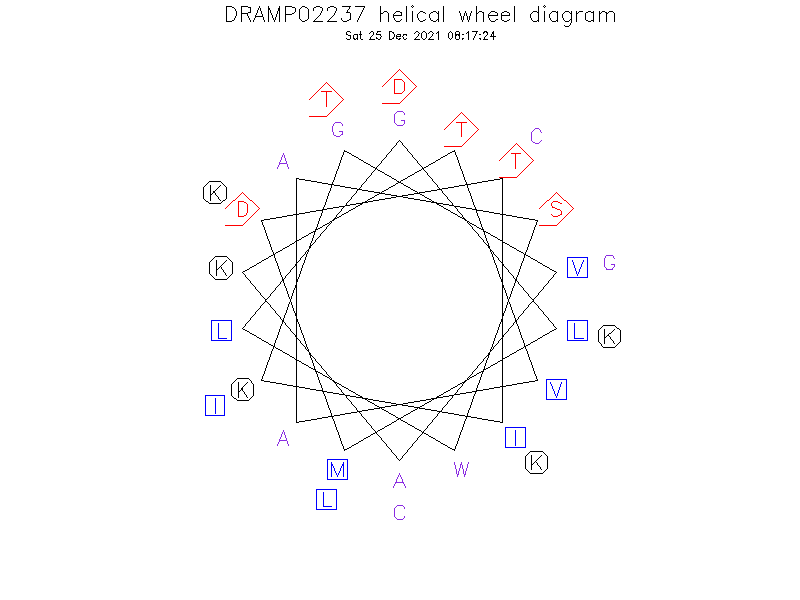General Information
-
DRAMP ID
- DRAMP02237
-
Peptide Name
- Ranatuerin-2Ya (Frogs, amphibians, animals)
-
Source
- Not found
-
Family
- Belongs to the frog skin active peptide family (Brevinin subfamily)
-
Gene
- Not found
-
Sequence
- GLMDTIKGVAKTVAASWLDKLKCKITGC
-
Sequence Length
- 28
-
UniProt Entry
- No entry found
-
Protein Existence
- Not found
Activity Information
-
Biological Activity
- Antimicrobial, Antibacterial, Anti-Gram+, Anti-Gram-, Antifungal
-
Target Organism
-
- [Ref.19254736] Gram-negative bacterium: Escherichia coli (MIC=50 µM);
- Gram-positive bacterium: Staphylococcus aureus (MIC=50 µM).
-
Hemolytic Activity
-
- [Ref.19254736] LC50>100 μM against human red blood cells
-
Cytotoxicity
-
- Not included yet
-
Binding Target
- Not found
Structure Information
-
Linear/Cyclic
- Not included yet
-
N-terminal Modification
- Not included yet
-
C-terminal Modification
- Not included yet
-
Nonterminal Modifications and Unusual Amino Acids
- Not included yet
-
Stereochemistry
- Not included yet
-
Structure
- Not found
-
Structure Description
- Not found
-
Helical Wheel Diagram
-
PDB ID
- None
-
Predicted Structure
- There is no predicted structure for DRAMP02237.
Physicochemical Information
-
Formula
- C130H224N34O37S3
Absent Amino Acids
- EFHNPQRY
Common Amino Acids
- K
Mass
- 2951.59
PI
- 9.24
Basic Residues
- 5
Acidic Residues
- 2
Hydrophobic Residues
- 11
Net Charge
- +3
-
Boman Index
- -8.13
Hydrophobicity
- 0.343
Aliphatic Index
- 101.07
Half Life
-
- Mammalian:30 hour
- Yeast:>20 hour
- E.coli:>10 hour
Extinction Coefficient Cystines
- 5625
Absorbance 280nm
- 208.33
Polar Residues
- 9
DRAMP02237

Comments Information
Function
- Antibacterial activity against Gram-positive bacteria and Gram-negative bacteria. Ranatuerin-2Ya showed appreciably greater cytolytic activity against HepG2 cells (LC(50)=20microM) than against erythrocytes (LC(50)>100microM).
Literature Information
- ·Literature 1
-
Title
- Peptides with potent cytolytic activity from the skin secretions of the North American leopard frogs, Lithobates blairi and Lithobates yavapaiensis.
-
Pubmed ID
- 19254736
-
Reference
- Toxicon. 2009 Jun;53(7-8):699-705. doi: 10.1016/j.toxicon.2009.02.018.
-
Author
- Conlon JM, Ahmed E, Coquet L, Jouenne T, Leprince J, Vaudry H, King JD.

